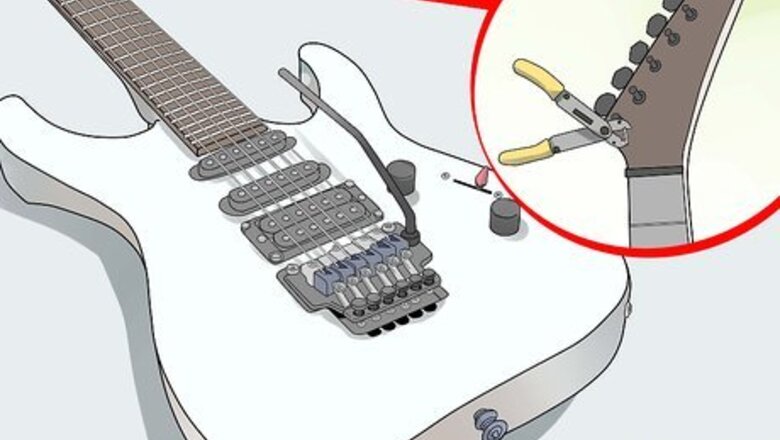
views
Be prepared to take your time. Custom-painting and finishing a guitar body properly is a process that can take weeks. Don't rush. There may be a tendency to get it done so you can play it: the solution to that is to acquire a finished, ready-to-go body. If you're doing your own paint job, you'll want to do it by the book and get it right-- or the rush-job will definitely show (badly) in the final results.
Disassemble the Guitar
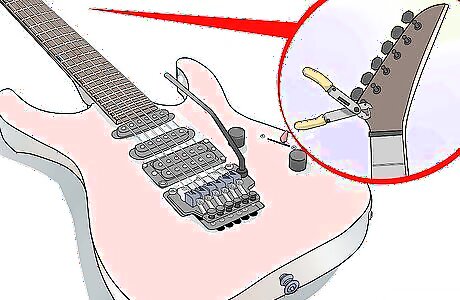
Remove the guitar's strings. You can clip the strings away using your usual pair of string clippers. Unfortunately, there is no way to repaint a guitar with its strings on, so note that you will likely need to readjust your truss rod once you reassemble the guitar.
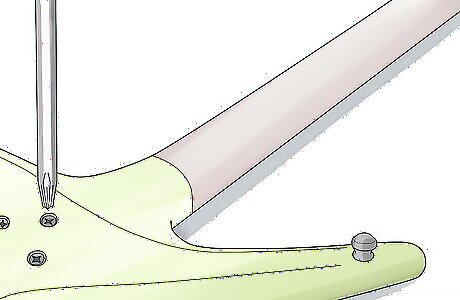
Remove the guitar's neck. Bolt-on guitar necks are fairly easy to remove - simply unscrew the bolts at the back of the neck joint and wiggle the neck free. Glued necks cannot be removed, but most glued necks are painted to match the guitar body anyway, so you'll want to leave it on so that you can repaint it.
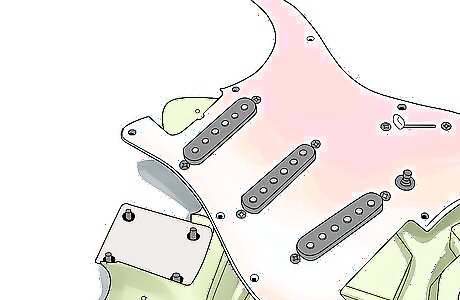
Remove all of the guitar hardware. The output jack, pickups, bridge, knobs, strap buttons, and pickguard can usually be removed using a screwdriver or Allen wrench. On some models, the output jack and knobs will be wired to the pickups through holes between each cavity, and so you'll need to snip the wires to remove each piece. Make sure to record how they were wired so that you can put it back together correctly.
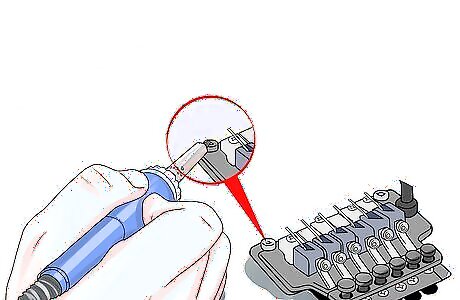
Pull out the bridge studs. Some guitars may not have these, and the bridge can simply be unscrewed from the body. Removing bridge studs can be difficult because they're pounded into the wood. You can use a soldering iron to heat them up so they expand, and then when they cool down they will contract and be easier to remove. You can use pliers to pull them out, but this can scar the finish and ruin their appearance.
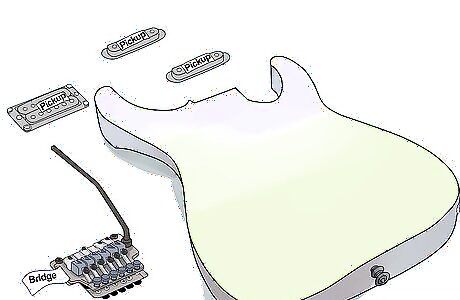
Set all of the fasteners and hardware aside and label them. The refinishing process can take a few weeks to a few months, so make sure each screw or bolt is labeled. This will prevent confusion when you try to reassemble the guitar.
Sand the Existing Finish
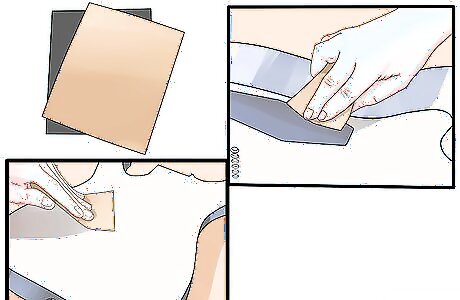
You have two options. Sand away the existing finish completely, or just rough up the existing finish to allow a fresh coat of paint to stick. If you're going with a stain, translucent paint, or if the original finish is much darker than the color of paint your using, then you need to completely remove the existing finish. Otherwise, if you're using a solid paint, then you only need to rough up the surface. Please be aware that most guitar builders agree that a thick coat of paint is tonally inferior to a thin coat of paint.
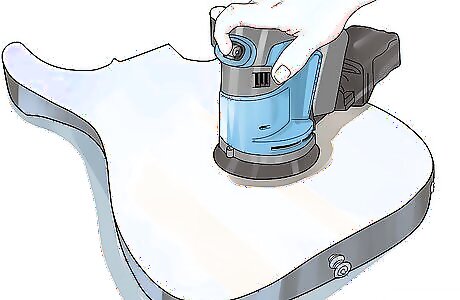
Use an orbital sander to remove the bulk of the finish. Fit an orbital sander with coarse-grit sandpaper and work over the entire guitar body using smooth, circular strokes. This technique should allow you to remove most of the lacquer and paint on the guitar's body. You may be tempted to use paint stripper. However, this is a very messy and toxic process, and most paint strippers are not capable of removing the rock-hard polyurethane that modern guitar manufacturers use.
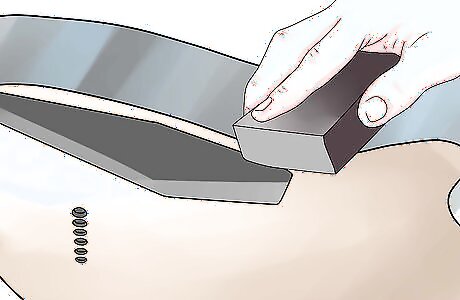
Use sandpaper or a sanding sponge to remove the remaining finish. For curved areas that are difficult to reach with the orbital sander, use loose sandpaper wrapped around a large dowel, or you can use a small sanding sponge. Coarse-grit sandpaper is best for removing the paint and lacquer.
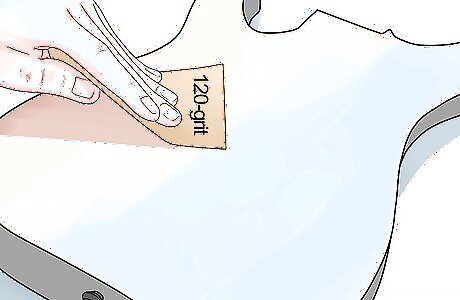
Smooth the guitar's body. After using coarse-grit sandpaper to remove the finish, you'll want to smooth out the wood using progressively finer grains of sandpaper. Work the entire body over with medium-grit sandpaper (such as 120-grit), and then go over it again using fine-grit sandpaper (such as 200-grit).
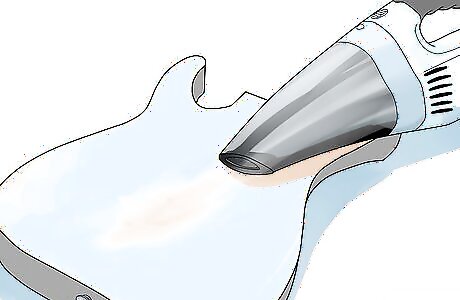
Remove all sanding dust. A vacuum cleaner with a hose attachment can remove most of the sanding dust. To remove additional dust, you can use a can of compressed air to spray it away or wipe it away with a moistened cloth or tack cloth.
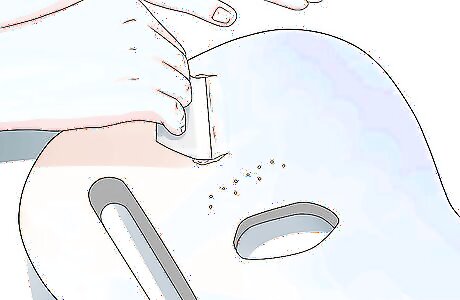
Apply grain filler. Unless you are going for the unfilled look, an option you have when working with mahogany or other porous woods, then you will need to fill in the grain with a filler or putty. Choose a water or oil-based filler that will match the paint or finish you are using.
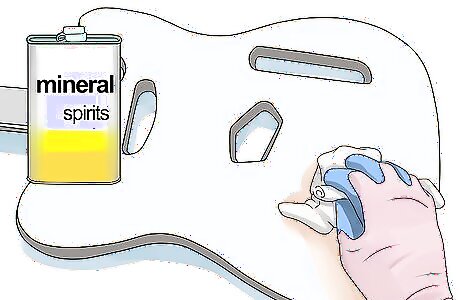
Finally, use mineral spirits to completely remove all oils. Do not touch the guitar's surface after this step, or oils from your fingers will ruin the finish.
Apply the New Finish

Be sure to paint in a dust-free environment. There are numerous air particles in the great outdoors even on a clear day that will seriously mar your finish-- including bugs that will be drawn to the odor!
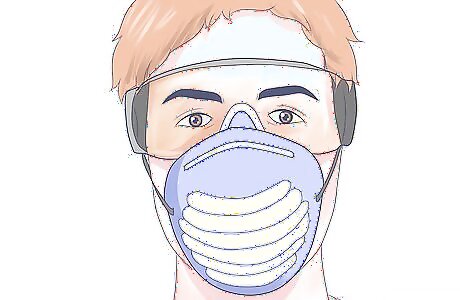
If painting indoors, be sure to use a quality air mask. Always wear goggles.
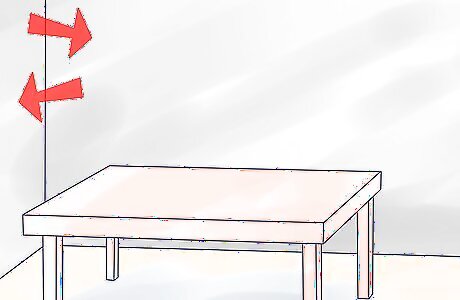
Don't paint in an area where overspray will affect furniture or floors. A workshop, garage, or similarly enclosed area will suffice.
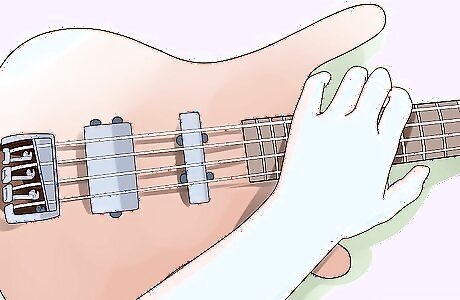
Placing the guitar body inside a large box on top of a portable worktable (such as a TV tray) will greatly reduce overspray and will protect other items in the area. The opening of the box should be to the side so that the paint is contained within the box and the guitar can be slid in and out. Putting newspapers inside the box provides an easily-replaceable painting surface.
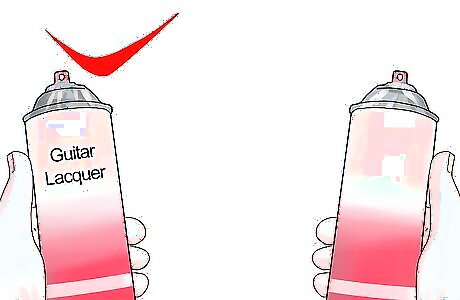
Choose the paint or stain you want to use. For solid color finishes, use a paint that is very durable, such as polyurethane or nitrocellulose. Nitrocellulose is the gold standard and can be found in auto parts stores or online, but it dries very slowly. For a stained finish, use a water-based stain and a nitrocellulose or polyurethane clear coat OR an oil-based stain with an oil-based finish such as Tru-Oil. Sprayed on finishes will prevent unsightly brush marks.
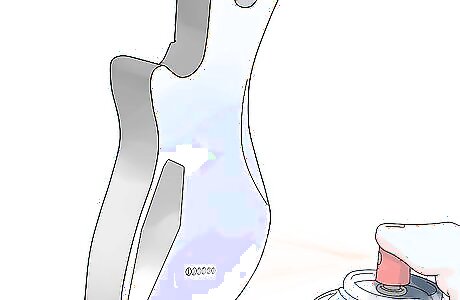
Apply a few coats of primer/sealer. Use a primer that matches the type of paint you are using. Aim to apply 2 or 3 thin coats rather than 1 thick one, as this helps the primer to dry properly and prevents drips.
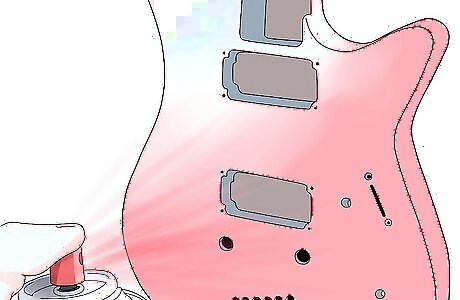
If using a solid color, apply the coats of paint. Apply two thin coats of paint, allowing the manufacturer's recommended drying time in between. Wait one week for the paint to completely dry before applying the clear coat.
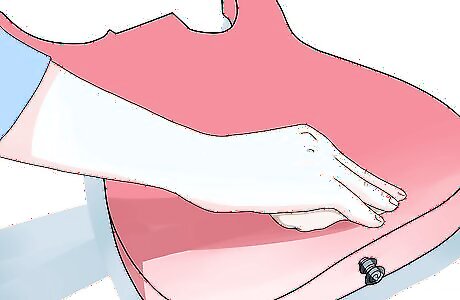
If using a stain, wipe on the stain. First, wet the guitar body with a little bit of moisture to ease the application of the stain and prevent blemishes. Apply the stain following manufacturer instructions, and apply as many coats as needed to achieve the look you're after.
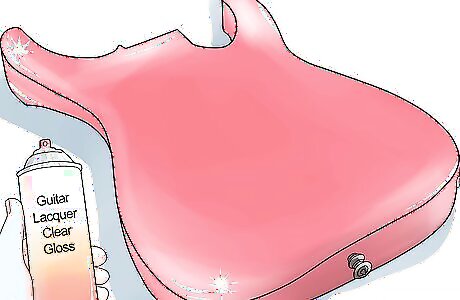
Apply a clear coat to the guitar. Again, nitrocellulose is recommended. Apply each coat as thin as possible, building up a clear, protective finish on the guitar. You may need to apply as many as a dozen thin coats to achieve a factory finish. Apply them in sets of three thin coats with a few hours in between coats and a week in between sets. The first set of coats need to be very, very thin. After that, you can apply them on a little thicker but make sure to avoid runs.
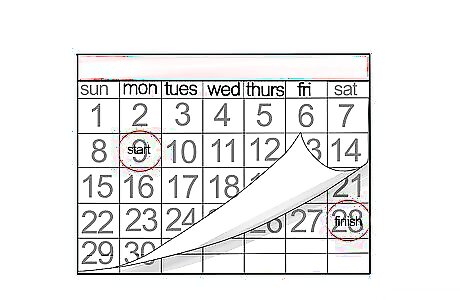
Wait. If you chose a nitrocellulose or polyurethane finish, wait 3 to 4 weeks for the paint to harden. If you chose an oil-based finish, such as Tru-Oil, you only need to wait a few days!

Polish the finish. Wet-sand the hardened finish starting with 400 grit, then 600, 800, 1000, 1200, 1500, and finally 2000. Do not skip any steps or else tiny pits, scratches, and swirls will be in the finish and will be impossible to get out. Do not sand through the clear coat and into the color coat especially on the edges of the body where the clear coat may be thinner; this is the reason why the clear coat requires so many coats. Stop here for a satin finish. For a mirror-like shine, use a buffing wheel and buffing compound such as 3M "Finesse It". Alternatively, you can use "Micro Mesh Finishing Pads"—a set of fine grit sanding sponges with #1500, 1800, 2400, 3200, 3600, 4000, 6000, 8000, and 12000 grits—that can be used to give a high-gloss finish without needing an expensive buffing tool.
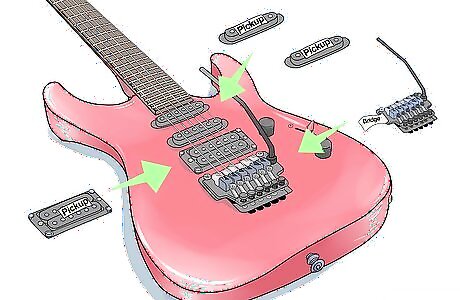
Reassemble the guitar. Screw or bolt together the guitar's hardware. If you had to snip any wires to disassemble the guitar, you'll have to solder them back together. This is now also a good time to replace the cheap factory components, namely the potentiometers, with high-quality ones. You can even buy a new pick guard or make a custom one. Once assembled, the guitar can be cleaned and shined using your usual guitar polish. Now just string it, tune it, and enjoy your beautiful new instrument!




















Comments
0 comment